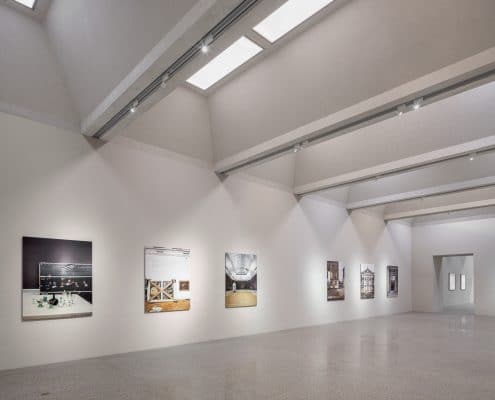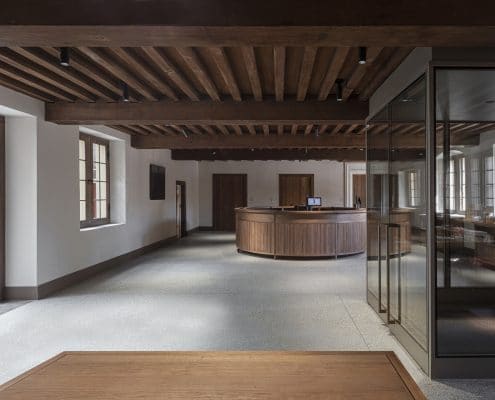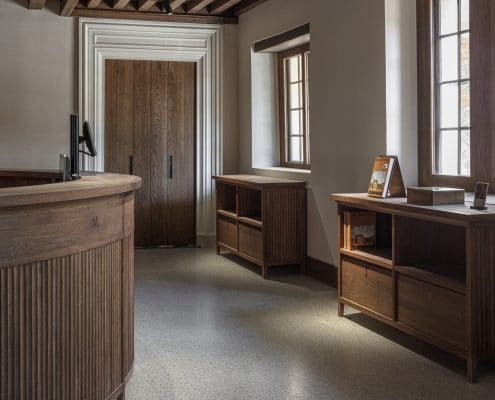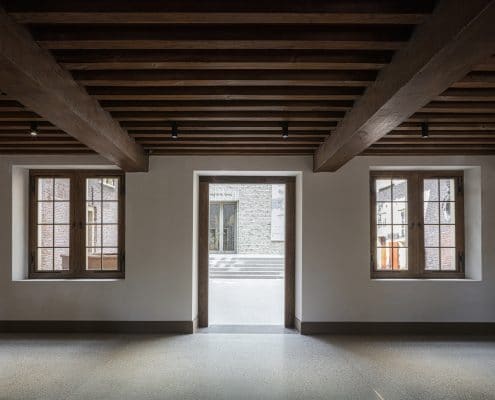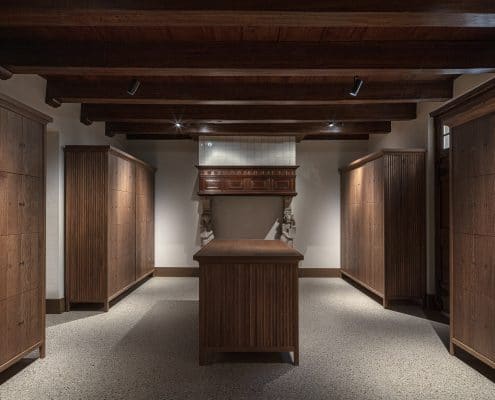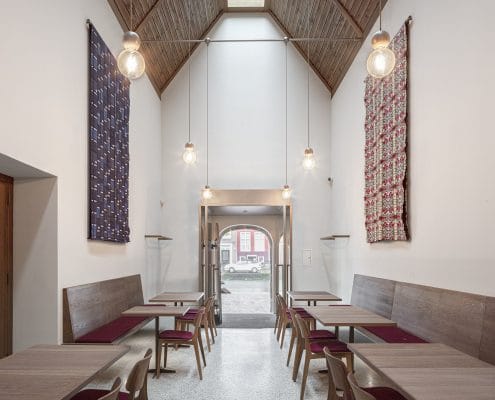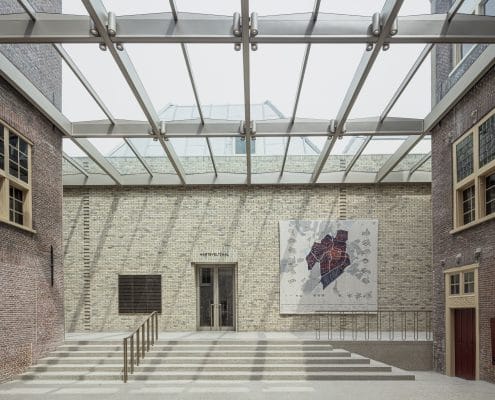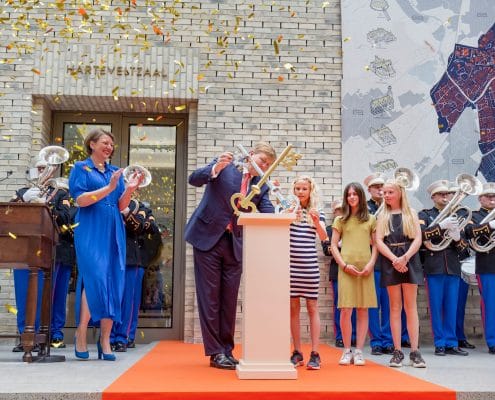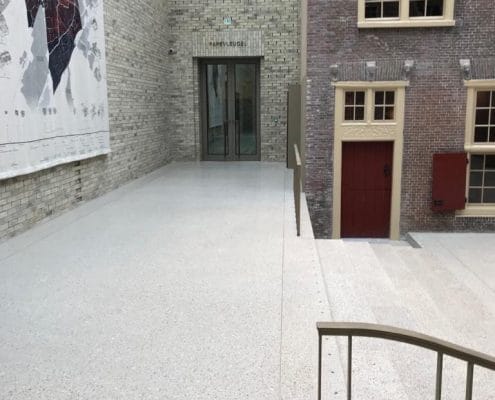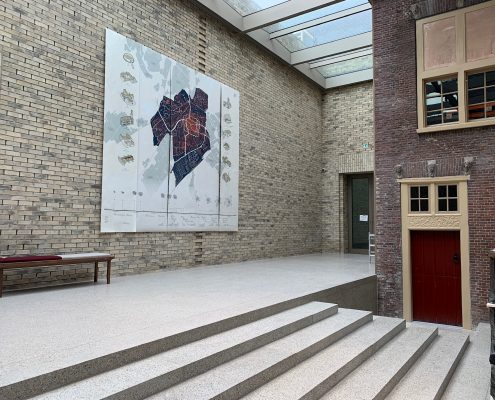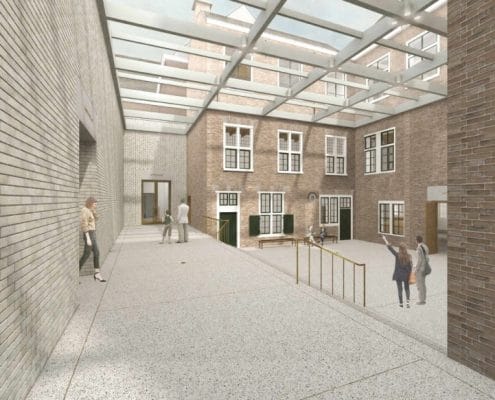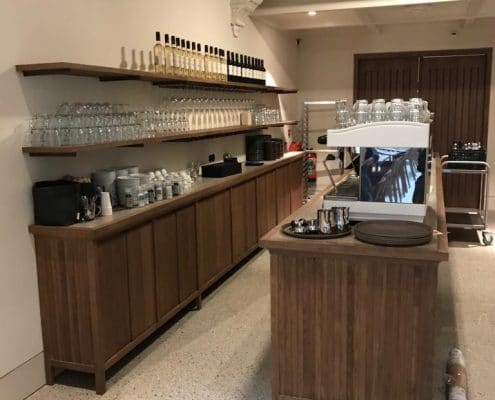Old and new knitted together at De Lakenhal museum
Off this main trading hall four rooms served official and ceremonial purposes for the cloth guild: the Governor’s Office, the Steelmaster’s Office, the Brewmaster’s Room to oil the wheels of business, and, perhaps most importantly, the Stamp Room. Here, cloth meeting the guild’s quality standards was ‘stamped’ with a lead embossing of the city’s coat of arms, making it tradeable globally. Visitors to De Lakenhal Museum will chance upon this motif all over Rotterdam firm Happel Cornelisse Verhoeven’s new extension – with conservation and refurbishment by London’s Julian Harrap Architects.
If these historical functions appear self-evident to the visitor, that too is due to the architects, as changing use and piecemeal addition in intervening years had rendered the original building almost unrecognizable. A public museum opened in 1870 in its attic storey, reached by a new stair in the north courtyard, the lowest flight of which was relocated when the new Harteveltzaal gallery was built two decades later. A neo-classical extension with its own entry, added to the museum’s east wing, it compounded the spatial confusion with a warren of internal corridors. And when a 1980s steel and polycarbonate canopy clumsily enclosed the south courtyard, the building’s descent from monumental via the civic to the municipal was sealed.
The latest scheme, won in competition in 2013, extended the complex to the west and north. It created two new state of the art gallery spaces below stacked service and administrative functions for the museum, and had at its heart the notion of stripping away past additions to reveal De Lakenhal in its former guise – a task that HCV Architects felt was best addressed with Harraps’ expert input. Under Harraps’ reinstatement and reinterpretation of the past plan, legibility is created for visitors with the £16 million result revealing the south courtyard in its full glory and the stair and circulation in the north courtyard making way for an orientating, internal central atrium, the Achterplaets.
- 1 of 4The north elevation’s brickwork required a number of ‘specials’ to generate its curious pixelated quality. Credit: Karin Borghouts
- 1 of 4Access stair from vestibule to the first floor galleries. Credit: Karin Borghouts
- 1 of 4The Achterplaets brings new purpose to the old north courtyard. Credit: Karin Borghouts
- 1 of 4Upper level admin areas in the north extension above the main gallery have strong spatial components and a muted palette. Credit: Karin Borghouts
The museum’s new, four-storey post-modern north elevation, overlooking the Lammermarkt public square, is the most obvious aspect of this transformation. But if it looks radically different to the rest of De Lakenhal, HCV was, says partner Paul Verhoeven, inspired by van ’s-Gravesande’s original design. ‘While the concrete structure of its rear elevation is quite tall, we emulated his ideas to mitigate its scale with the Lammermarkt,’ he explains. ‘Where van ’s-Gravesande used projecting wings to deal with the lower scale of the canal frontage and the taller palace behind, we have fused the two in our elevation.’ Here, brick corbelling reveals itself by degrees from the facade of pale grey/green Petersen brick, delineating in negative the roofline edging the Lammermarkt, resulting in its angled window profile. Verhoeven adds that the decision to minimise surface modulation at upper levels was behind the gold powder-coated aluminium window sections, detailed to keep brick, glass and frame in line with each other. Seen together, there’s a sense of almost defensive drama.
It’s one aided by the complexity of the brickwork in its rusticated base which required thousands of hand-cast ‘specials’. While keeping the museum’s main entrance via the south courtyard was as much an emotional as practical decision, it did avoid any need for circulation from the Lammermarkt side. But even on this ‘service’ side of the building, there’s robust dignity to the detailing. The steel access door for trucks delivering artworks was designed with artist Hansje van Halem and is counter-pointed by the smaller entrance to workshop and office floors above. Balancing the modulated triptych of openings is the large arched deep-set window that gives direct views in and out of the gallery – across to the 18th century De Valk windmill. The three arches reference its hemispherical cap, Verhoeven points out.
From outside, HCV’s intervention is less obvious on the canal side, where the firm replaced an earlier extension with a narrow strip that provides a café and WCs accessed from street, courtyard or vestibule. It might be small, but it’s articulated. ‘Like the north elevation, we created a base plinth, mid section and crown. It’s classical but in a modern way,’ notes Verhoeven.
Internally, the biggest moves were reserved for the two new galleries and the north courtyard; revealing them necessitated wholesale removal of 150 years of random poché – including, controversially, the Joristrap staircase. But its snug repositioning behind the café was crucial to unlocking circulation, explains Verhoeven. Once more, van ’s-Gravesande’s north wings project visibly from his main block, forming three sides of the enclosed, rooflit Achterplaets, the north side of which has the entrance to the Harteveltzaal and HCV’s new galleries. ‘With the maze of corridors removed, the old north courtyard is the new orientation point for the museum, letting visitors move easily into our block, the original building, Harteveltzaal, or the 1928 wing,’ explains Verhoeven. Its ‘intelligent roof’ is formed of steel beams stretching its length, each alternate one containing a gutter for the double-glazed roof panels that run in a low zig-zag across it. High-level air feeds at the perimeter invisibly condition the space, exhausting out through De Lakenhal’s ground floor vestibule. Voids between bricks on its north face aid acoustic insulation to leave this concrete-floored hard space comfortably attenuated.


